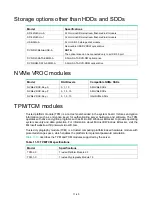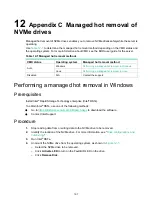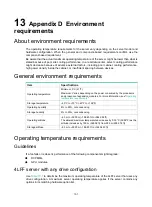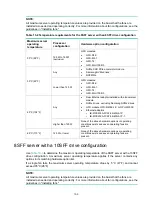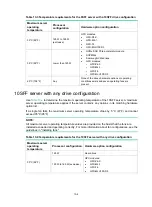
15-1
15
Appendix F Glossary
Item Description
B
BIOS
Basic input/output system is non-volatile firmware pre-installed in a ROM chip on a
server's system board. The BIOS stores basic input/output, power-on self-test, and auto
startup programs to provide the most basic hardware initialization, setup and control
functionality.
C
CPLD
Complex programmable logic device is an integrated circuit used to build reconfigurable
digital circuits.
E
Ethernet
adapter
An Ethernet adapter, also called a network interface card (NIC), connects the server to the
network.
F
FIST
Fast Intelligent Scalable Toolkit provided by H3C for easy and extensible server
management. It can guide users to configure a server quickly with ease and provide an
API interface to allow users to develop their own management tools.
Front media
module
A module installed at the server front to provide one VGA port and two USB 2.0 ports.
G
GPU module
Graphics processing unit module converts digital signals to analog signals for output to a
display device and assists processors with image processing to improve overall system
performance.
H
HDM
H3C Device Management is the server management control unit with which administrators
can configure server settings, view component information, monitor server health status,
and remotely manage the server.
Hot swapping
A module that supports hot swapping (a hot-swappable module) can be installed or
removed while the server is running without affecting the system operation.
K
KVM
KVM is an abbreviation for keyboard, video, and mouse. KVM is a management method
that allows remote users to use their local video display, keyboard, and mouse to monitor
and control the server.
N
NVMe SSD
expander
module
An expander module that facilitates communication between the system board and the
front NVMe hard drives. The module is required if a front NVMe hard drive is installed.
NVMe VROC
module
A module that works with VMD to provide RAID capability for the server to virtualize
storage resources of NVMe drives.
R
RAID
Redundant array of independent disks (RAID) is a data storage virtualization technology
that combines multiple physical hard drives into a single logical unit to improve storage
and security performance.


